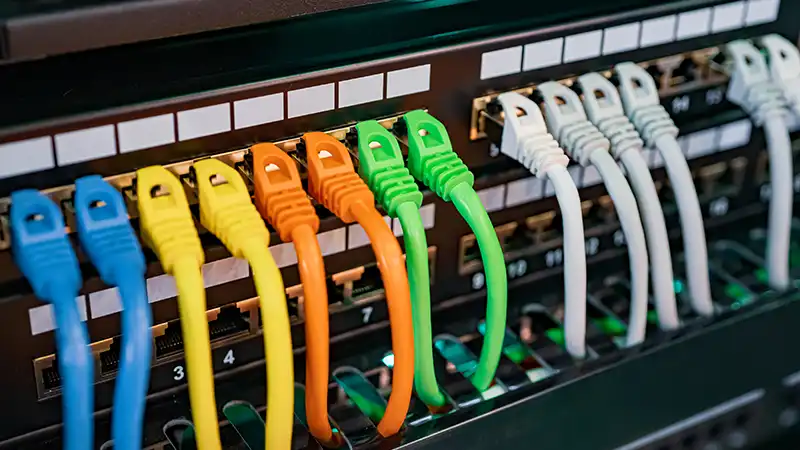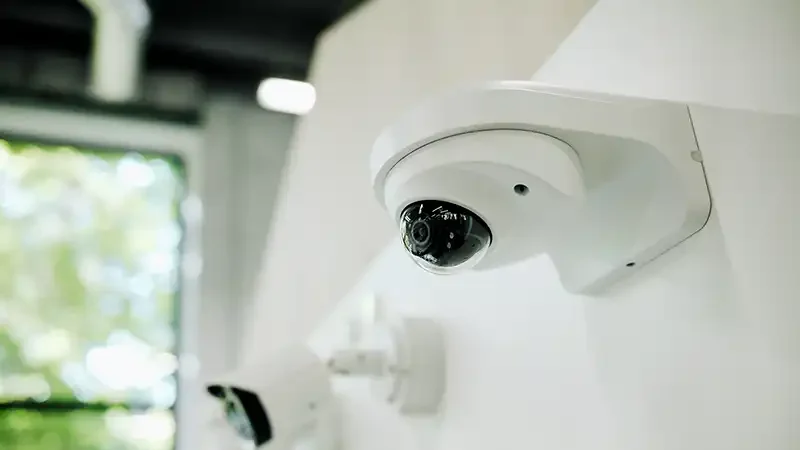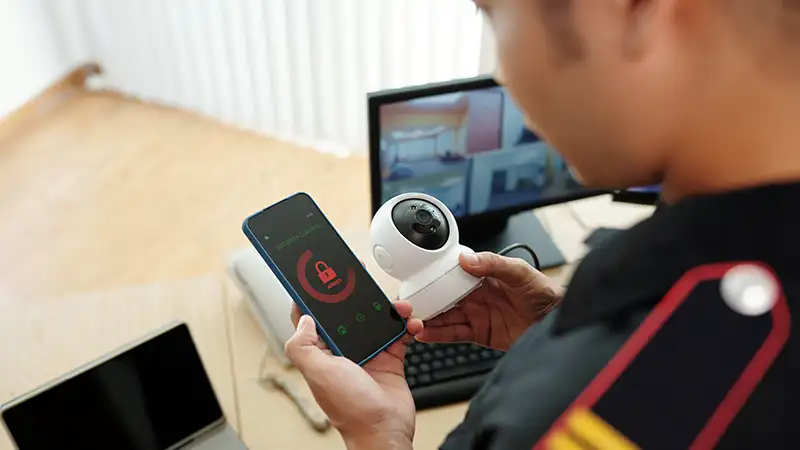
- Jul 09 2025
- |
- Reading Time: 4 Min
The Hidden Risks of Power Over Ethernet Devices
Reading Time: 4 minutesOn the surface, Power over Ethernet (PoE) seems like a no-brainer choice. One cable for power and data? That’s fewer wires, faster installs, and cleaner infrastructure, especially for AV gear, security cameras, and access points. However, when not planned properly, Power over Ethernet devices can compromise performance, strain your network, and ultimately lead to higher costs in the long run.
In commercial environments where reliability is crucial and uptime is critical, PoE isn’t always the shortcut it appears to be. When not planned properly, Power over Ethernet devices can compromise performance, strain your network, and ultimately lead to higher costs in the long run.
Let’s walk through some of the hidden risks associated with PoE devices, so you can make informed decisions that keep your systems running smoothly.
What Is Power Over Ethernet, and Why Does Everyone Love It?
Power over Ethernet (PoE) is a technology that enables the delivery of both data and electrical power over a single Ethernet cable. This eliminates the need for separate power wiring, which is a huge win in spaces where access is tight, or clean cable runs are essential.
You’ll find many Power over Ethernet devices in all kinds of modern commercial spaces:
-
- IP security cameras
- Wireless access points
- Intercom and paging speakers
- VoIP phones
- Digital signage players
- AV encoders and decoders
- Lighting and automation controls
The advantages are clear:
-
- Lower cabling and labor costs
- Easier device placement (no need to be near an outlet)
- Centralized power management (often via a network switch)
- Cleaner, faster installs
It’s no wonder PoE has become the go-to power source for many modern AV and IT projects. However, that convenience can come at a cost if you don’t know what to watch out for.
The Hidden Risks of PoE That Most People Don’t Consider
PoE is an incredibly useful technology, but it is also easy to misuse. Here are the risks we see most often in the field and how you can avoid them:
1. Switch Overload and Network Downtime
PoE switches only have so much wattage to go around. Stack too many power-hungry devices on a single switch, and you may reach the limit, resulting in brownouts, reboots, or complete system failure.
Example: A switch rated for 370W of total PoE budget might seem fine… until you plug in 10 cameras that each need 30W. You’re now over budget, and your devices may randomly drop offline.
Solution:
-
- Calculate your total power draw before you buy
- Leave headroom (20–30%) to account for fluctuations or future upgrades
- Use managed switches that can monitor and alert you to power usage
2. Incompatible or Non-PoE Infrastructure
Not all switches support PoE. Some offer it only on select ports. Others don’t conform to IEEE standards, leading to inconsistent or underpowered delivery.
Problem: You may think your switch supports PoE+ until you realize it only delivers 15W per port instead of the 25W your devices need.
Solution:
-
- Check that your switch supports 802.3af (PoE), 802.3at (PoE+), or 802.3bt (PoE++)
- Confirm both per-port wattage and total power budget
- Don’t mix unmanaged switches with critical Power over Ethernet devices
3. Cable Distance and Voltage Drop
Power degrades over long distances, especially with low-quality cabling. Voltage drop can lead to device instability, flickering, or failure.
Solution:
-
- Stick to the 100-meter max limit (or shorter if possible)
- Use certified Cat5e, Cat6, or better
- For longer runs, use midspan injectors or powered extenders
4. Device Underperformance or Random Failures
Not all Power over Ethernet devices are low-power. PTZ (pan-tilt-zoom) cameras, digital signage players, or conference room video bars often exceed standard PoE limits, especially when operating under a full load.
Symptoms of underperformance:
-
- Devices rebooting randomly
- Slow or delayed response
- Features not working (e.g., motion control on PTZ cameras)
Solution:
-
- Check device power requirements
- Match with appropriate PoE class (af = 15.4W, at = 25.5W, bt = 60–100W)
- Avoid running demanding devices near the switch’s limit
5. Complex Troubleshooting
When one cable handles both power and data, diagnostics get trickier. Is the problem your switch? The cabling? The network? The device?
Solution:
-
- Use managed PoE switches with logging and monitoring features
- Label cables and ports clearly
- Work with an AV integrator who can separate and isolate potential issues
6. Security Blind Spots
Every network device can be a security risk, and every PoE device counts as one. Open ports, default credentials, or unsegmented traffic can all expose vulnerabilities.
Solution:
-
- Use VLANs to isolate AV and security traffic
- Change default passwords and monitor network traffic
- Work with your IT team to maintain best practices
When PoE Works Well (and When It Doesn’t)
Power over Ethernet is a great tool, but like any tool, it works best when used in the right context. Here’s how to know if it’s the right fit for your project or when it might be worth considering alternatives.
When PoE Makes Sense
You’re installing devices in hard-to-reach or awkward locations. PoE shines when you’re putting gear up on poles, ceilings, or in remote corners where power outlets aren’t practical.
You need a clean, centralized setup. Managing power from a single network closet makes it easier to reboot, monitor, and manage devices without touching each one.
You’re running low-power devices like paging speakers, basic IP cameras, or Wi-Fi access points. These are classic PoE use cases and rarely run into wattage issues.
You want faster installation and lower labor costs. Fewer cable types = fewer trades involved and shorter install timelines.
When PoE Might Cause Problems
You’re powering high-wattage devices like PTZ cameras, video bars, or large digital signage players. These often exceed standard PoE capabilities and require PoE++ or even dedicated power supplies.
You’re planning long-distance runs across large buildings or campuses. PoE is limited to about 100 meters, and voltage drop becomes a real issue the longer the cable run.
Your network switches are already close to capacity. Adding PoE devices to an underpowered or over-utilized switch can degrade performance for everyone on the network.
Your IT infrastructure is loosely managed or outsourced. When PoE fails, the root cause isn’t always obvious. A misconfigured switch, cable fault, or overloaded port can lead to long troubleshooting delays, especially if your team isn’t familiar with the nuances of AV power.
Bottom line: PoE is excellent when applied with intention. But it’s not a one-size-fits-all solution, and assuming it is can lead to more frustration than savings.
Why Work With CGS
At Carolina Georgia Sound, we install technology and help you make sense of it.
Power over Ethernet can be a game-changer when used properly. But when it’s rushed or oversimplified, it can create headaches that ripple across your entire AV or IT system. That’s why CGS works closely with clients from the start to ask the right questions, check the right specs, and design systems that look clean and perform reliably over time.
Whether you’re planning a new facility, upgrading your AV infrastructure, or just wondering whether PoE is the right fit, we can help. Our team knows what works, what lasts, and what’s worth avoiding.
Let’s make your next install smarter. Contact CGS today for a PoE readiness consult.
Recent Success Stories





![]()
Great team, excellent service. We highly recommend!
Georgetown Villas Llc.
Owner,
![]()
We’ve been enjoying the music of Carolina Georgia Sound here at Roundabouts for 10+ years now. They offer a wide variety of music from all genres at an affordable price. Customer service is very helpful and responsive.
Roundabouts Consignments.
Owner,
![]()
Very fast, considerate, respectful, knowledgeable, not to mention helpful. I would recommend them to everyone! I will continue to use them!!!!!







